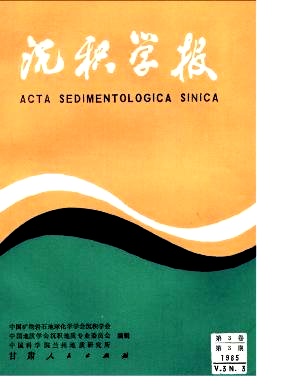HTML
| [1] | (1)王鸿祯、刘本培等,1980地史学教程,107~122页,地质出版社。 (2)Mcilreath, I. A, and James, N. P. 1978 Facies models 13. Carbonate slopes, Geoscience Canada, V. 5,pp, 189-199, (3)Nardin, T. R。,et al.,1979, A review of mass movement processes, sediment and acoustic characteristics,and contrasts in slope and base-of-slope syste ms ver- sus canyon-fan-basin floor systems. In; Geofogy of Continental Slopes(ed, by L. J. Doyle and O. H. Pilkey).SEPM Special Publication No. 27 P. 61-73. (4)Middleton, G, V, and Hampton, M, A, 1976 Subaqueous sediment transport anddeposition by sediment gravity flows, In:Marine Sediment Transport and Envi-ronmental Management(ed, D, J, Stanley and L). J. P. Swif t),pp. 197-218.John wiley, New York. (5)Kelling, G, and Holroyd, J. 1978 Clast size, shape, and composition in some ancient aad modern fan gravels. In: Sedimentation in Submarine Conyons, Fans, and Trenches(ed. D. J, Stanley and G.Iielling).pp, 138-159. Dowden. Hutc-hinson and Ross, Inc.。 (6)Allen, J, R, L.,1982,Sedimentary Structures: their character and physical basis- Vo, II p, 395-437 Elsevier Scientific Publication company, Amsterdam-Oxford -New York, (7)Crevello, P. D, and Schlager, W,,1980 Carbonate debris sheets and turbidites, Exuma Sound, Jour, Sedi. Petrol.,}', 50, pp, 1121-1147. (8)Walker, R. G. 1976 Facies models 2。Turbidites and associated coarse elastic deposits, Geoscience Canada, V, 3,pp. 25-36, (9)Rupke, N. A, ,1978 Deep elastic sea, In: Sedimentary Environment and Facies (ed. H. G. Reading).pp, 372-415, Blackwell Scientific Publication, Oxford London. |






 DownLoad:
DownLoad: